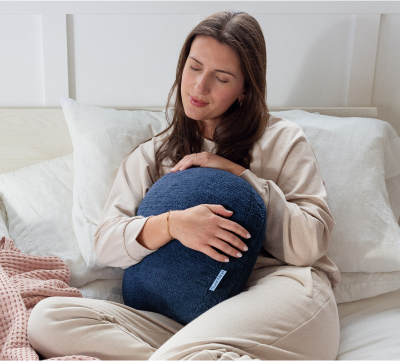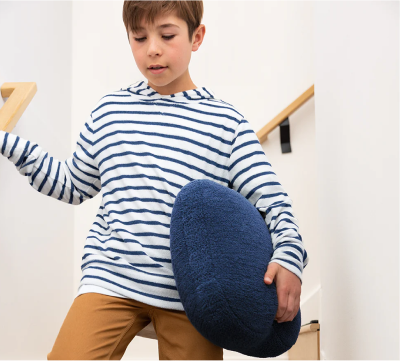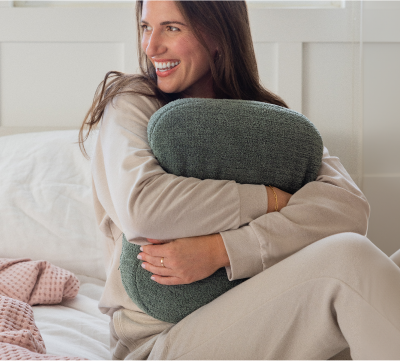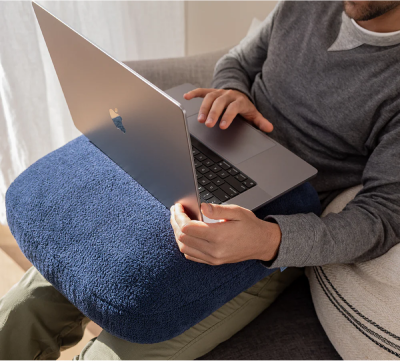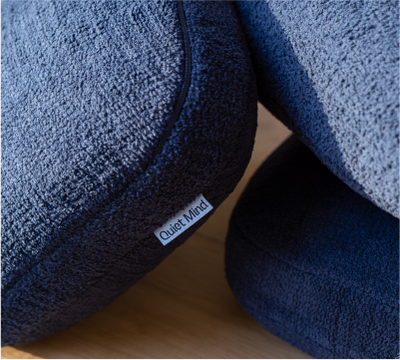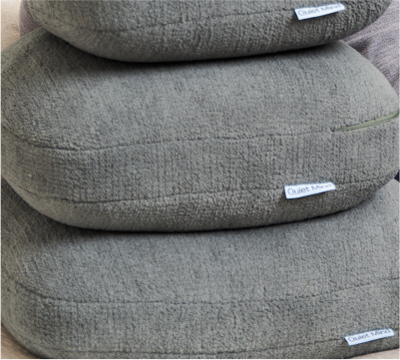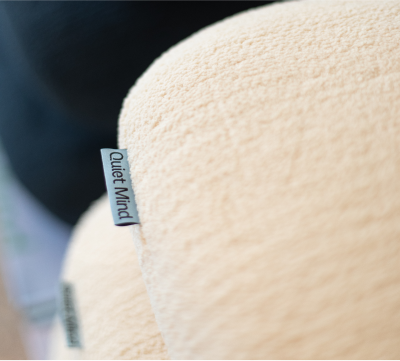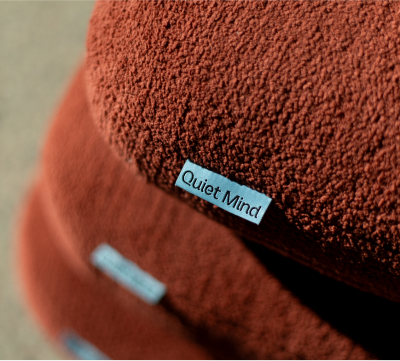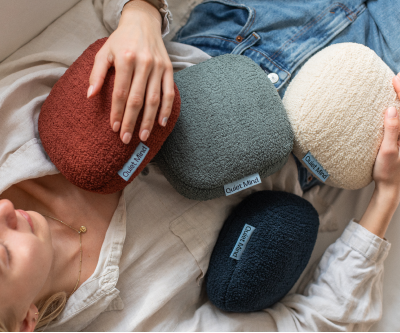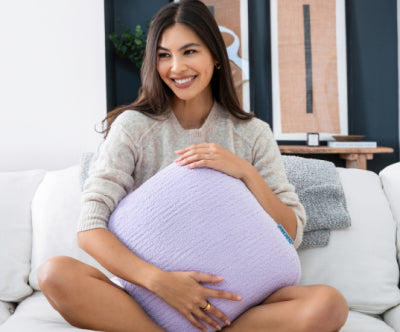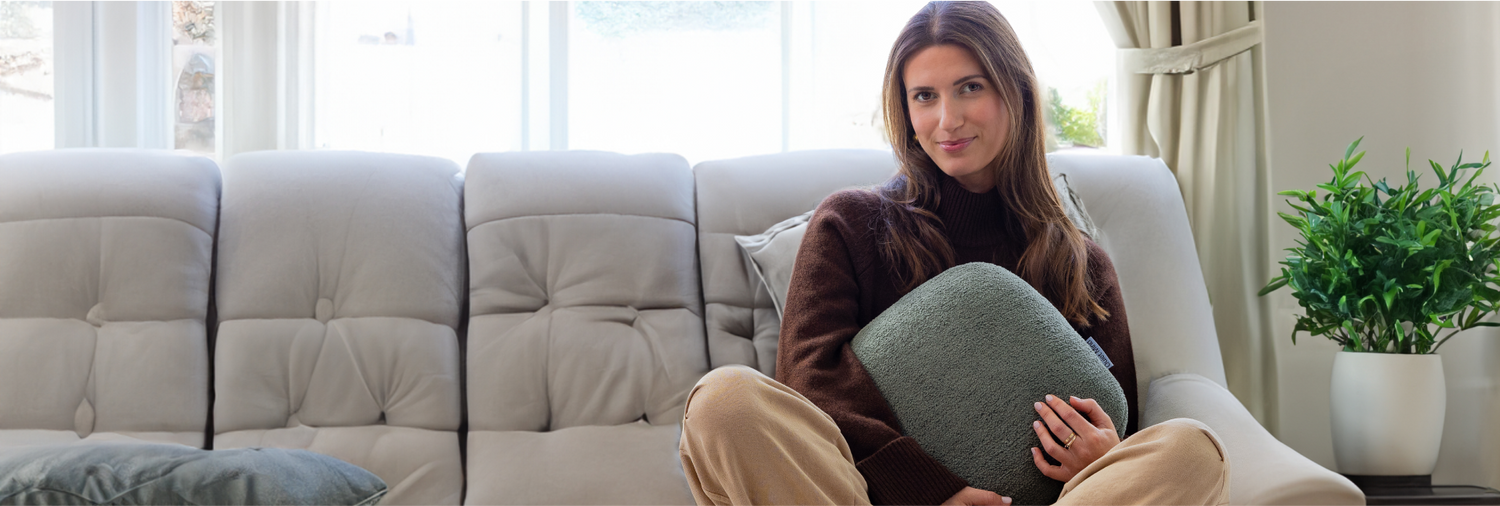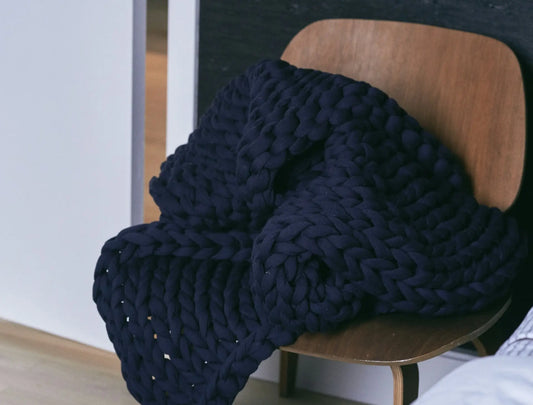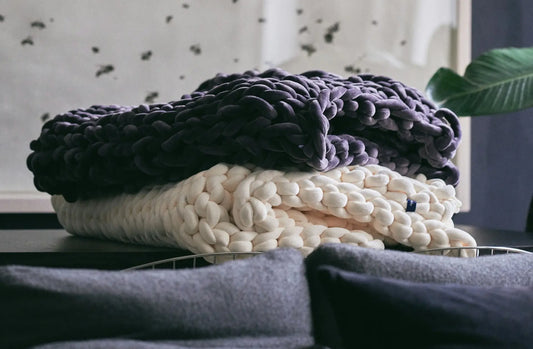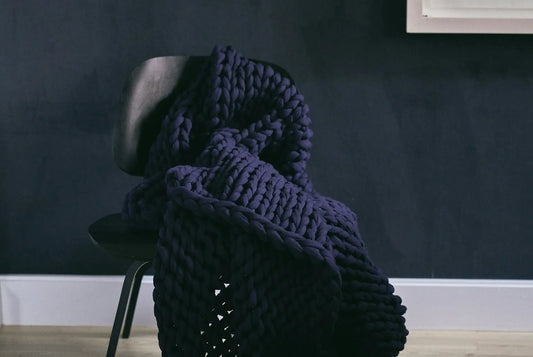Not all sleep aids are created equal, and not all comfort is immediate. For those navigating stress and anxiety, autism, ADHD, or simply struggling to fall asleep, a weighted blanket can offer gentle, sensory support. But weighted blankets aren’t magic on their own. The way you use them, and how your body responds, matters deeply.
Using a weighted blanket is not just about piling on an extra blanket. It’s about applying deep touch pressure to the body in a way that calms the nervous system, helps regulate cortisol (the body’s stress hormone), and promotes the release of dopamine and serotonin, key brain chemicals that support emotional balance and rest.
This guide tells you how to use a weighted blanket correctly to support better sleep, reduce overwhelm, and experience its calming benefits, whether at night or during the day.
Choosing the Right Weighted Blanket
Weighted blankets are more than just heavy comforters, they’re sensory tools. According to a 2024 study done in Journal of Psychiatric Research, deep touch pressure may help calm the nervous system, support serotonin release, and ease the transition into deep sleep. Many people with anxiety, ADHD, or autism use weighted blankets as part of their sleep or calming routine.
Finding the right weighted blanket is essential for safety, comfort, and long-term benefits. Here's how to get it right.
Selecting the Appropriate Weight
A general rule is to choose a blanket that’s around 10% of your body weight. Most weigh between 5 and 30 pounds. If you’re unsure where to start, err on the lighter side, you can always layer it over a duvet or extra blanket if needed.
The right amount of weight varies by individual. While some people with anxiety or restless leg syndrome may find heavier options more effective, others may prefer lighter input.
For children with autism spectrum disorder or ADHD, always prioritize freedom of movement and supervision. Make sure they can remove the blanket on their own. When in doubt, consult your doctor for guidance on how to determine the right weight for your child.
Picking the Right Size and Material
When you choose a weighted blanket, ensure it covers your entire body without hanging over the edges of the bed. For individual use, twin or full sizes are usually best. A well-fitted blanket won’t slide off or bunch up, helping to maintain even pressure.
Fabric also plays a role in comfort. Cotton is breathable and soft, while bamboo helps regulate temperature. Fleece or minky fabrics provide warmth but may feel too hot for some users. If you are prone to overheating, consider cooling fabrics or alternatives like weighted pillows, which provide the same pressure without trapping body heat.
How to Use a Weighted Blanket Safely
Using a weighted blanket should feel soothing, not stifling. Whether you're new to it or trying to refine your approach, keeping these safety tips in mind will help you feel grounded, not overwhelmed.
Proper Placement on the Body
To use your weighted blanket safely, drape it evenly over your body from shoulders to feet. Avoid placing the blanket on top of your head or face to ensure unobstructed breathing. Let the blanket contour naturally, don’t tuck it in tightly, especially if you experience sleep problems related to mobility or discomfort.
If you're layering it over a comforter, make sure it doesn’t create too much heat or pressure. Remember: weighted blankets aren’t meant to restrict, they’re meant to help you feel safe and still.
Recommended Duration of Use
Start slowly. Begin with 20–30 minutes while reading or unwinding, then gradually extend your use over several nights. For some, the benefits of a weighted blanket show up quickly. For others, it may take a few weeks to notice shifts in anxiety reduction. This is normal, the effectiveness of weighted blankets often improves with routine and gentle integration.
If you feel sore, overheated, or restricted, take a break. Your body may need a lighter weight or you may benefit more from using a weighted pillow for shorter sessions during the day.
Suitable Sleeping Positions
Your preferred sleep position affects how weighted blankets work. Thoughtful positioning can prevent tension and enhance comfort.
-
Back sleepers often benefit most, as the blanket’s weight is evenly distributed across the torso and legs.
-
A weighted blanket for side sleepers should ensure the blanket isn’t pressing too hard into one shoulder or hip. Some designs are better suited to side sleeping and help avoid pressure buildup. A supportive knee pillow can also help reduce joint strain.
-
Stomach sleepers should use caution. The pressure of a weighted blanket in this position can cause neck or lower back tension.
While these guidelines are based on general sleep and weighted blanket principles, individual experiences may vary. If you’re unsure whether your sleep position is compatible, try using Quiet Mind’s weighted pillow during the day to test your response to deep pressure therapy before committing to full-night use.
Tips for Maximizing Benefits
Weighted blankets can be helpful, but how you use them matters as much as the blanket itself. These strategies can help increase comfort, support relaxation, and improve your sleep over time.
Gradual Introduction and Adjustment Period
Just like any sensory input, your body may need time to adapt to a weighted blanket. Start with short sessions and check in with how your body responds. Over time, you’ll likely notice more ease with falling asleep, a greater feeling of comfort, or fewer nighttime wake-ups.
For people with conditions such as insomnia, chronic stress, or trauma-related sleep disturbance, this gradual process is especially important.
Combining with Other Relaxation Techniques
Pair your blanket use with sensory-friendly rituals that help signal rest:
-
Mindful Breathing: Inhale for four counts, exhale for six, this rhythm helps calm the nervous system.
-
Aromatherapy: Scents like lavender or chamomile can enhance the benefits of using a weighted tool.
-
Progressive Muscle Relaxation: Gently tense and release muscles under the pressure of a weighted blanket.
These tools don’t just add to your bedtime routine, they help your brain and body recognize that it’s time to rest.
Combining Weighted Blankets with Weighted Pillows
For deeper relaxation, many people find that combining both offers the best results. The blanket provides steady, full-body pressure, while the pillow delivers targeted grounding and calm. Together, they enhance comfort and promote a more balanced sense of relaxation. The benefits of combining both are:
-
Full-body calm from the blanket with focused pressure from the pillow.
-
Reduces anxiety and improves overall body awareness.
-
Provides flexibility for all seasons; use both together for full relaxation or just the pillow on warmer nights.
-
Helps reinforce a consistent relaxation routine for better sleep quality.
Quiet Mind Weighted Pillows pair perfectly with any weighted blanket. Their compact size, breathable materials, and balanced glass bead filling create a versatile setup for both day and night use, making them a natural complement to your calming routine.
Weighted Blankets vs. Weighted Pillows: Which Is Right for You?
Both tools provide calming deep pressure, but they differ in comfort, cost, and convenience.
Drawbacks of Weighted Blankets:
-
Bulky and heavy, difficult to move around at night.
-
Can trap heat, making them uncomfortable for hot sleepers.
-
Limited portability, mostly for bed use only.
-
More expensive than smaller products.
Advantages of Weighted Pillows:
-
Lightweight and portable; use in bed, on the couch, or at work.
-
More affordable than full-sized blankets.
-
Targeted support across chest, lap, or shoulders.
-
Easier to use daily and not limited to sleep routines.
If you like the idea of deep touch pressure but want a solution that adapts to your day, Quiet Mind weighted pillows are the practical alternative to full blankets.
The Everyday Alternative: Weighted Pillows
Weighted blankets can be a powerful sleep aid, but they are not always the best fit. For people who overheat easily, dislike heavy bedding, or want stress relief outside the bedroom, weighted pillows deliver calm in a more accessible way.
Quiet Mind’s weighted pillow is designed to apply gentle, even pressure without bulk. Place it across your chest to ease racing thoughts, on your lap to stay grounded while working, or behind your back for steady comfort while resting.
This versatility makes pillows the everyday alternative that helps you feel calm, supported, and balanced, without the drawbacks of a full blanket.
Final Thoughts: Start Gently, Rest Deeply
A weighted blanket can help shift your body into a calmer, more restful state, but only when it feels safe, not forced. The benefits of using a weighted blanket are best experienced slowly, over time, as your nervous system learns to trust the deep touch pressure it receives.
If you’re navigating sleep problems, stress and anxiety, or sensory overload, a blanket that feels like a hug might be a helpful part of your nightly rhythm. Just remember: the key is to use your weighted blanket with awareness and kindness toward your body’s cues.
And if a full-size blanket feels like too much? There are softer options. Weighted pillows, vests, and weighted lap pads can offer similar grounding benefits during the day, no bed required.
Let your routine be about support, not perfection. One breath, one evening, one gentle layer at a time.
About QuietMind
At QuietMind, we understand that rest is more than sleep, it’s regulation. For those navigating stress and anxiety, sensory overwhelm, or sleep advice that never seems to stick, we offer tools designed to speak gently to the nervous system.
Our signature weighted pillow is crafted to provide calming, even pressure across the chest, lap, or shoulders. Whether you’re trying to fall asleep, reset after a long day, or simply help you feel grounded, it’s a soft, steady reminder that rest doesn’t have to be earned, it can be invited.
Frequently Asked Questions
How do I determine the right amount of weight for my blanket?
A general rule is to choose a blanket that’s about 10% of your body weight. Most adult blankets weigh between 5 and 30 pounds. Adjust for comfort, not just the math.
Can children use weighted blankets safely?
Yes, but only if they are over age 3, can remove the blanket themselves, and it’s the right weight for your child. For best results, consult your doctor before use, especially for children with ADHD or on the autism spectrum disorder.
What sleep position is best when using a weighted blanket?
Back sleeping allows for the most even pressure. Side sleepers should monitor hip and shoulder comfort, and stomach sleepers may experience discomfort under the pressure of a weighted blanket.
Can weighted blankets help with stress and anxiety?
Yes. Many people with anxiety report feeling calmer and more regulated with regular use. The pressure of a weighted blanket may lower cortisol levels and support serotonin release, both of which help with emotional balance.
Are there alternatives to full-body weighted blankets?
Absolutely. Weighted pillows, lap pads, and vests offer deep touch pressure in more targeted ways. These can be useful for daytime support or for those sensitive to full-body weight.
